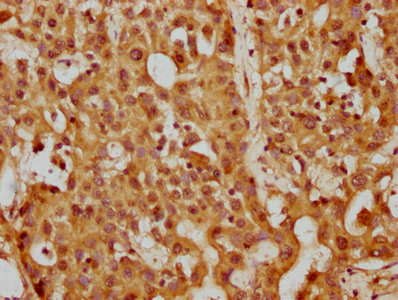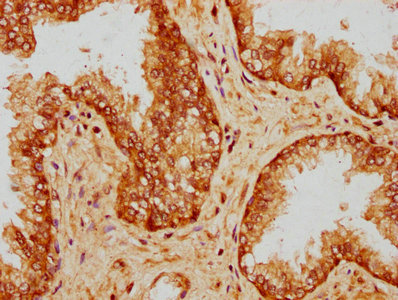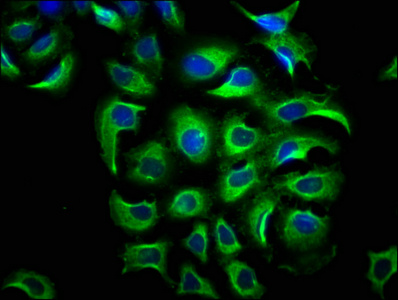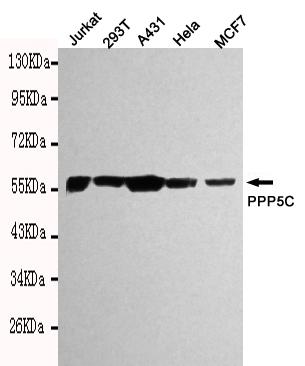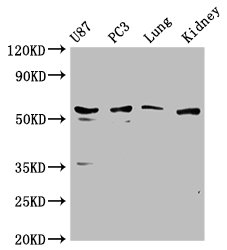
Western Blot Positive WB detected in: U87 whole cell lysate, PC3 whole cell lysate, Mouse lung tissue, Mouse kidney tissue All lanes: PPP5C antibody at 1:1000 Secondary Goat polyclonal to rabbit IgG at 1/50000 dilution Predicted band size: 57 kDa Observed band size: 57 kDa
PPP5C Antibody
CSB-PA018582LA01HU
ApplicationsImmunoFluorescence, Western Blot, ELISA, ImmunoHistoChemistry
Product group Antibodies
ReactivityHuman, Mouse
TargetPPP5C
Overview
- SupplierCusabio
- Product NamePPP5C Antibody
- Delivery Days Customer20
- ApplicationsImmunoFluorescence, Western Blot, ELISA, ImmunoHistoChemistry
- CertificationResearch Use Only
- ClonalityPolyclonal
- ConjugateUnconjugated
- Gene ID5536
- Target namePPP5C
- Target descriptionprotein phosphatase 5 catalytic subunit
- Target synonymsPP5, PPP5, PPT, serine/threonine-protein phosphatase 5, PP-T, protein phosphatase T
- HostRabbit
- IsotypeIgG
- Protein IDP53041
- Protein NameSerine/threonine-protein phosphatase 5
- Scientific DescriptionSerine/threonine-protein phosphatase that dephosphorylates a myriad of proteins involved in different signaling pathways including the kinases CSNK1E, ASK1/MAP3K5, PRKDC and RAF1, the nuclear receptors NR3C1, PPARG, ESR1 and ESR2, SMAD proteins and TAU/MAPT. Implicated in wide ranging cellular processes, including apoptosis, differentiation, DNA damage response, cell survival, regulation of ion channels or circadian rhythms, in response to steroid and thyroid hormones, calcium, fatty acids, TGF-beta as well as oxidative and genotoxic stresses. Participates in the control of DNA damage response mechanisms such as checkpoint activation and DNA damage repair through, for instance, the regulation ATM/ATR-signaling and dephosphorylation of PRKDC and TP53BP1. Inhibits ASK1/MAP3K5-mediated apoptosis induced by oxidative stress. Plays a positive role in adipogenesis, mainly through the dephosphorylation and activation of PPARG transactivation function. Also dephosphorylates and inhibits the anti-adipogenic effect of NR3C1. Regulates the circadian rhythms, through the dephosphorylation and activation of CSNK1E. May modulate TGF-beta signaling pathway by the regulation of SMAD3 phosphorylation and protein expression levels. Dephosphorylates and may play a role in the regulation of TAU/MAPT. Through their dephosphorylation, may play a role in the regulation of ions channels such as KCNH2.
- ReactivityHuman, Mouse
- Storage Instruction-20°C or -80°C
- UNSPSC41116161

